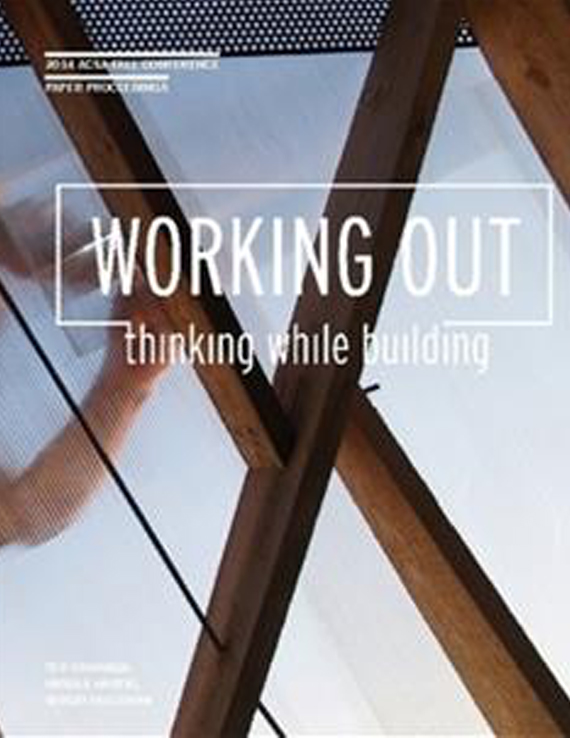Author(s): Ilona Hay
Tools are down, the dust has settled, and congratulations have been given. Objects in their new ‘homes’… are now abandoned. What now?As part of coursework, our undergraduate architecture students built small-scale community projects for real clients. Clients included: an art commissioning body for hospitals, local allotments, and the university. Projects included: seating, a market stall, a catering cart, a privacy screen, and planters. Student teams managed small budgets provided by clients, purchased materials, and built what they designed. Projects were eco- and budget friendly, as they made much use of local and re-claimed materials. The research question explored in this proposal is how can this work move beyond the ‘one-off’? This paper reviews Design-Build projects as a social process in a place, and a material manifestation of culture. Projects start as an intense period of designing, collaborating, and making, but the question is: what happens when the work is complete, delivered to the client and the makers walk away? Longer relationships with commissioning client groups are possible, and there is a continuing pedagogic link and legacy with the next year of students. This abstract is for a collaborative study that has come out of an initial client relationship: between a practicing architect and lecturer, and a specialist completing a Master’s in Social Sculpture. The former runs architecture courses with Design-Build, and the latter is client to student projects and is also a professional who project manages art commissions. To clarify the potential for continuity beyond completion of an object, this paper will review a) the design process, b) the material/building implications, and c) the pedagogical element. To expand on these points:The design process for Design-Build is similar to that of craft, as observed by Adamson (2007, p.4), ‘It is a way of doing things, not a classification of objects, institutions, or people.’ Context is an important element of the work and informs what is produced. The reflective dialogue within group collaboration is perhaps the most important outcome but this is hard to teach, it needs to be experienced. It is a ‘lived experience’, a phenomenological approach. Following a material culture approach, the object itself can be a source for study. Drawing upon the research of Maudlin and Vellinga (2014, p.1) one can “…[examine] the lives of buildings after ‘completion’, not as examples of decay through use, but as [an] ongoing and formative process of consumption.” Not only the material and construction can be studied, but the subsequent use.How can students learn through reflecting on practice? There are at least three areas of focus possible, linked to both process and material: i) what students learn as they build, ii) what they learn upon reviewing objects, and iii) what others can learn from the objects –even if not involved in the original making.Intersection between architecture and social sculpture (and architecture, project management, and university) is the viewpoint through which the above topics are explored. Through this cross-disciplinary collaboration the educational potential of Design-Build is explored, beyond the build.
Volume Editors
Sergio Palleroni, Ted Cavanagh & Ursula Hartig
ISBN
978-0-935502-94-7

 Study Architecture
Study Architecture  ProPEL
ProPEL 
